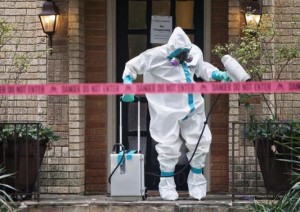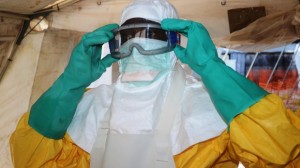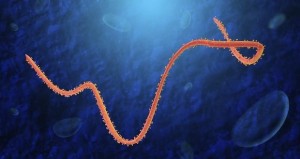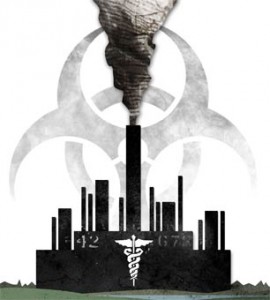
Medical experts need to rethink how highly infectious diseases are handled in the United States, a U.S. health official said on Monday, after a Dallas nurse contracted Ebola despite wearing protective gear while caring for a dying Liberian patient.
As an outbreak of the deadly virus spread beyond West Africa, hospitals and nursing associations across the United States were taking a closer look at how prepared they were to handle such infections.
“We have to rethink the way we address Ebola infection control. Even a single infection is unacceptable,” Dr. Thomas Frieden, director of the U.S. Centers for Disease Control and Prevention, told reporters. “The care of Ebola is hard. We’re working to make it safer and easier.”
Frieden said health authorities are still investigating how the nurse became infected while caring for Thomas Eric Duncan in an isolation ward at Texas Health Presbyterian Hospital.
Duncan died last week and the nurse is the first person to contract the virus on U.S. soil, taking concerns about containing its spread to new heights.
The infected nurse is Nina Pham, 26, according to a Sunday school teacher at the church where her family worships and through a public records check of her address. Attempts to reach her family were not immediately successful.
The family was in shock when it learned the young woman had contracted Ebola, said Tom Ha, a close friend of the Pham family who is also a Bible studies teacher at the Our Lady of Fatima Catholic Church in Fort Worth.
“The mother was crying, very upset,” he told Reuters.
The Dallas nurse is “clinically stable,” Frieden said, and the CDC is monitoring others involved in Duncan’s care in case they show symptoms of the virus.
Frieden also apologized for remarks on Sunday, when the nurse’s infection was first disclosed, that suggested she was responsible for a breach in protocols that exposed her to the virus. Some healthcare experts said the comments failed to address deep gaps in training hospital staff to deal with Ebola. [ID:nL2N0S8014]
“I’m sorry if that was the impression given,” Frieden said. He said the agency would take steps to increase the awareness of Ebola at the nation’s hospitals and training for staff.
The Texas Nurses Association defended Pham in a statement, saying it was wrong to assume the nurse was to blame.
“The facts are not known about how the nurse in Dallas was exposed,” the association stated. “It is incorrect to assume that the nurse failed to follow protocols.”
At his news conference, Frieden said some changes in procedures had already been put into effect, including having staff monitor those putting on and taking off protective gear, and retraining staff on how to do so safely.
He said other steps were being considered including new types of protective clothing and possibly spraying down staff with solutions that could kill the virus if someone were to become contaminated.
Dr. Anthony Fauci, director of the National Institute of Allergy and Infectious Diseases, said in an interview with ABC that officials should consider sending Ebola patients only to a few “containment” hospitals.
President Barack Obama was briefed by Frieden and senior members of the administration about the second Dallas case and stressed that “lessons learned” from the CDC’s investigation should be shared with hospitals and healthcare workers across the country, the White House said.
Obama also spoke separately with U.N. Secretary General Ban Ki-Moon and with French President Francois Hollande about international efforts to contain the outbreak and to provide treatment centers in affected African nations.
A brief scare at Boston’s Logan International Airport caused emergency crews in protective gear to remove five passengers with flu-like symptoms from Emirates flight 237 from Dubai, but the CDC later said there was no Ebola threat.
EBOLA WASTE A CONCERN
Meanwhile, Louisiana’s top law enforcement official said he was granted a temporary restraining order to prevent the personal items of Duncan, who died on Wednesday, from being buried in a local landfill after being incinerated.
Louisiana Attorney General Buddy Caldwell said material collected from Duncan and the Dallas apartment where he was staying was taken to Port Arthur, Texas, on Friday to be incinerated. From there the incinerated material was to have gone to a hazardous waste landfill in Louisiana.
“There are too many unknowns at this point, and it is absurd to transport potentially hazardous Ebola waste across state lines,” Caldwell said in a statement after the restraining order was granted.
According to CDC guidelines, the Ebola virus does not survive on materials that have been incinerated.
The current Ebola outbreak is the worst on record and has killed more than 4,000 people, mostly in West Africa’s Liberia, Sierra Leone and Guinea. Duncan, a Liberian, was exposed to Ebola in his home country and developed the disease while visiting the United States.
Ebola, which can cause fever, vomiting and diarrhea, spreads through contact with bodily fluids such as blood or saliva.
The infection of the Dallas nurse is the second known to have occurred outside West Africa since the outbreak that began in March. It follows that of a nurse’s aide in Spain who helped treat a missionary from Sierra Leone, who died of the virus.
Officials said Pham’s pet dog, a 1-year-old King Charles Spaniel, would be kept safe while its owner was in the hospital. That contrasts with the dog of the health worker in Spain that was euthanized out of fear the animal could spread the disease, prompting protests from animal rights activists.
(Additional reporting by Julie Steenhuysen in Chicago, Jonathan Kaminsky in New Orleans, Marice Richter in Dallas and Roberta Rampton in Washington; Writing by Jon Herskovitz and Ken Wills; Editing by Michele Gershberg and Lisa Shumaker; Editing by Andrew Hay and Tom Brown)
FILED UNDER:
U.S.
Health




